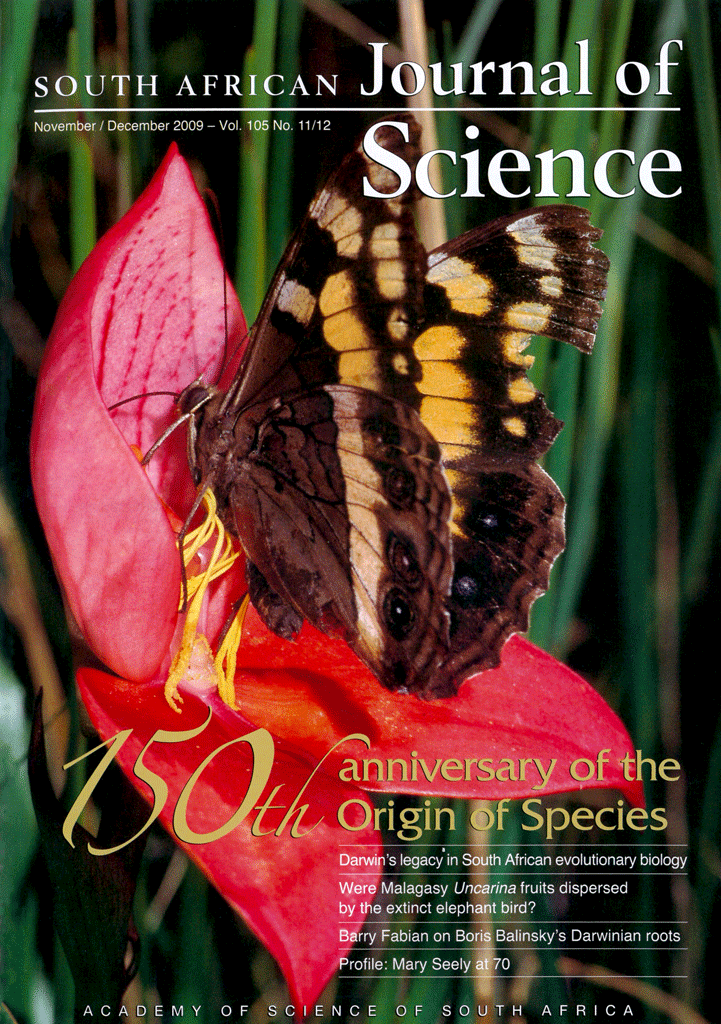Chimpanzee subspecies and 'robust' australopithecine holotypes, in the context of comments by Darwin
Abstract
On the basis of comparative anatomy (including chimpanzees, gorillas and other primates), Darwin1 suggested that Africa was the continent from which 'progenitors' of humankind evolved. Hominin fossils from this continent proved him correct. We present the results of morphometric analyses based on cranial data obtained from chimpanzee taxa currently recognised as distinct subspecies, namely Pan troglodytes troglodytes and Pan troglodytes schweinfurthii, as well as Pan paniscus (bonobo). Our objective was to use a morphometric technique2 to quantify the degree of similarity between pairs of specimens, in the context of a statistical (probabilistic) definition of a species.3 - 5 Results obtained from great apes, including two subspecies of chimpanzee, were assessed in relation to same-scale comparisons between the holotypes of 'robust' australopithecine (Plio-Pleistocene hominin) taxa which have traditionally been distinguished at a species level, notably Paranthropus robustus from South Africa, and Paranthropus (Australopithecus/ Zinjanthropus) boisei from East Africa. The question arises as to whether the holotypes of these two taxa, TM 1517 from Kromdraai6 and OH 5 from Olduvai,7 respectively, are different at the subspecies rather than at the species level.Downloads
Published
2010-02-02
Issue
Section
Research Letters
License

All articles are published under a Creative Commons Attribution 4.0 International Licence
Copyright is retained by the authors. Readers are welcome to reproduce, share and adapt the content without permission provided the source is attributed.
Disclaimer: The publisher and editors accept no responsibility for statements made by the authors
How to Cite
Thackeray, J., & Prat, S. (2010). Chimpanzee subspecies and ’robust’ australopithecine holotypes, in the context of comments by Darwin. South African Journal of Science, 105(11/12), 463-464. https://sajs.co.za/article/view/10232
Views
- Abstract 132
- PDF 94













.png)